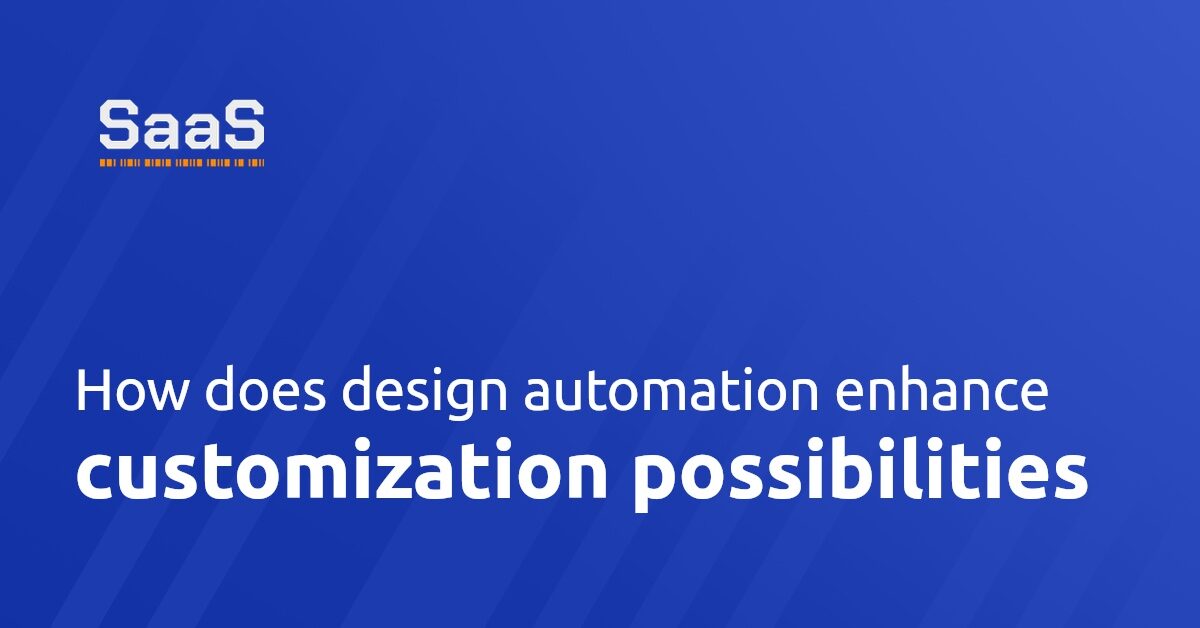How does design automation enhance customization possibilities?
Design automation is a fast-emerging approach to product development that offers immense potential for customization. At its most basic, design automation involves using algorithmic, rule-based solutions to create new designs or tweak existing ones. The customization offered by these systems doesn't just extend to rudimentary features, but can also involve intricate, strategic parameters modified to tailor-make products for specific user needs.
Moreover, design automation allows companies to turn out custom designs quickly and efficiently. In traditional design methods, the creation of each unique product needs substantial time and human resources. By leveraging robotic technology, however, design automation speeds up the customization process significantly, making it more streamlined and economical. It also offers the potential to create entirely new personalized products with unique, innovative features designed from scratch.
Is personalization accessible through design automation tools?
With the rise of Industry 4.0, personalization is becoming a pivotal part of consumer experience. Today, customers expect products and services tailored to their unique preferences which is where design automation tools come into the picture. These tools offer advanced software capabilities for creating personalized designs by adapting product attributes to suit individual customer demands.
Customers can input their preferences into design automation tools, enabling the software to generate unique, personalized designs. These designs are not just minor variations on a theme but are specific to individual customers' needs. This process minimizes the need for manual interference and dramatically enhances the precision of customized designs, thus saving time while ensuring authenticity.
Can design automation revolutionize product customization?
As technologies continue to evolve, product customization is becoming more in-demand. To stay competitive, businesses are now adopting design automation to meet customer demands efficiently. Design automation has the potential to revolutionize product customization by democratizing the design process. It allows individual consumers to become designers, to some extent, by giving them the ability to control specific design features.
Besides, design automation facilitates the production of complex, highly personalized designs that were difficult or impossible to manufacture using traditional methods. With design automation, mass customization becomes easier, allowing companies to provide personalized products on a much larger scale than before. It also opens up possibilities for truly unique one-off products designed to an individual's exact specifications.
The benefits of design automation for personalized designs
One of the key advantages of design automation is its potential for improving design accuracy. By reducing human intervention, it mitigates chances of error which is crucial when creating personalized designs where precision is paramount.
The speed of design is another significant advantage. Once the necessary parameters are set, a system can churn out thousands of design alternatives in minutes. This rate of production is simply impossible with human designers. Furthermore, design automation improves scalability, enabling companies to deliver high-volume, personalized orders with minimal lead time.
Lastly, design automation brings considerable cost benefits. It reduces the need for budget-intensive teams of human designers and cuts down the laborious process of creating and modifying designs manually. With fewer errors resulting from human involvement, businesses can also save substantially on cost overruns and reworks.
In conclusion, the significance of design automation in the realm of customization and personalization is undeniable. By enhancing design speed, precision, and affordability, it is revolutionizing the way we create and consume personalized products. As this technology continues to evolve and mature, its applications in customization will only grow, making it an indispensable tool for businesses across industries.







